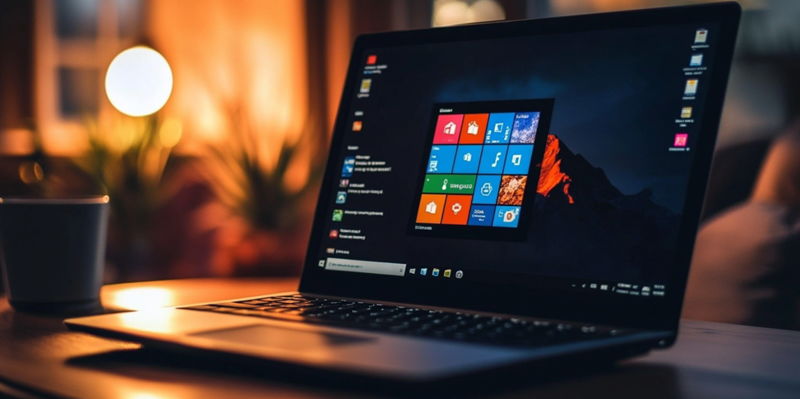A newly uncovered vulnerability in Windows Themes has the potential to expose NTLM credentials to attackers, putting numerous Windows users at risk. Despite Microsoft issuing a patch for the CVE-2024-38030 vulnerability, which aimed to address the Windows Themes spoofing issue initially reported by Tomer Peled of Akamai, the flaw remains largely unmitigated across several Windows platforms. Further research conducted by Acros Security has revealed that the vulnerability persists even on the latest Windows 11 24 . This vulnerability threatens the security of user credentials through the manipulation of theme files.
Understanding the Windows Themes Vulnerability
The Role of Theme Files in the Vulnerability
The vulnerability revolves around the capability of Windows theme files to specify network paths for properties like BrandImage and Wallpaper. Upon loading these theme files, Windows sends authenticated network requests to remote hosts specified in the theme, thus potentially leaking user NTLM credentials. This issue becomes critical as attackers could exploit these theme files to access sensitive information without the user’s knowledge. Microsoft’s initial patch attempted to mitigate the risk by utilizing the PathIsUNC function to detect network paths and avoid sending out these authenticated requests. However, bypassing techniques had been earlier identified by James Forshaw in 2016.
The Persistence of the Vulnerability
Despite the patch, the problem resurfaced, prompting Tomer Peled to report the issue again, leading to the assignment of CVE-2024-38030. It was found that existing mitigation methods could still be circumvented, highlighting the persistence of the vulnerability across fully updated Windows platforms, including the latest Windows 11 24. Continuing research has shown that the flaw’s persistence indicates a more complex underlying issue that requires comprehensive solutions beyond the initial measures introduced by Microsoft. This establishes that simply detecting network paths is insufficient in preventing the exploitation of the flaw by attackers.
Mitigating the Threat
Development of Comprehensive Patches
To counteract the uncovered vulnerabilities, researchers have devised more in-depth patches that address all execution paths leading to network requests within Windows theme files. These patches ensure that any potential attempts to exploit the network paths are thoroughly examined and mitigated. The patches have been disseminated through the 0patch micropatch service, a platform offering a proactive defense against newly identified zero-day vulnerabilities. This service currently provides these micropatches freely to protect both current and legacy Windows versions until Microsoft releases a fully functional fix.
Protecting Various Windows Versions
The provided micropatches cover a range of Windows versions explicitly, including multiple versions of Windows 10, from v1803 to v21, and Windows 7. Meanwhile, versions such as Windows 10 v22 and all supported editions of Windows 11 are among those receiving regular updates. However, notable is the exclusion of Windows Server patches due to the Desktop Experience feature not being default in server installations. Additionally, for the theme file vulnerability to affect a server, user interaction beyond just viewing is required. These protective measures provide users with immediate safeguards against credential theft while awaiting an official comprehensive update from Microsoft.
The Importance of Continuous Cybersecurity Efforts
Implications of the Vulnerability
The discovery and subsequent investigation of this Windows theme files vulnerability underscore the ongoing cybersecurity risks even following initial patch efforts. The ability of attackers to exploit such vulnerabilities continuously challenges the existing measures employed to safeguard user data. This case exemplifies the necessity for constant vigilance, thorough monitoring, and extensive patching efforts to preemptively address and mitigate evolving technological threats. It is a stark reminder of the persistent and adaptive nature of cybersecurity threats that require multifaceted and updated responses.
Long-Term Solutions and Continuous Monitoring
A newly discovered vulnerability in Windows Themes poses a serious risk by potentially exposing NTLM credentials to attackers, affecting many Windows users. Microsoft has issued a patch for the CVE-2024-38030 vulnerability that targets the Windows Themes spoofing issue, first reported by Tomer Peled from Akamai. Nevertheless, the issue remains largely unaddressed across numerous Windows platforms. Further investigations by Acros Security indicate that the vulnerability persists even in the latest Windows 11 24 update. This security threat is particularly concerning as it allows attackers to manipulate theme files to access user credentials. The flaw, therefore, represents a significant security risk, leaving many users vulnerable despite the initial patch. Users are urged to stay vigilant and keep their systems updated while Microsoft continues to work on a comprehensive solution to fully mitigate the threat posed by this exploit in Windows Themes, ensuring all platforms are properly secured.

